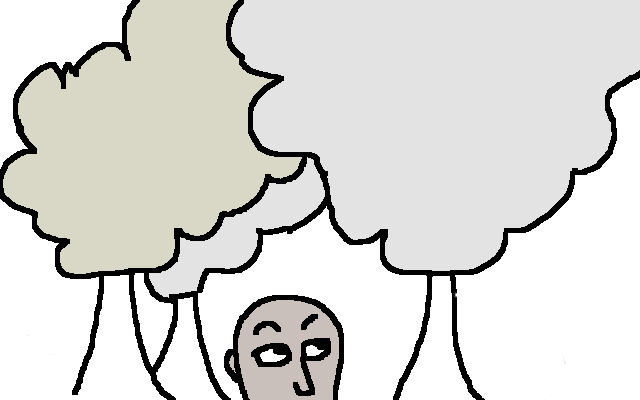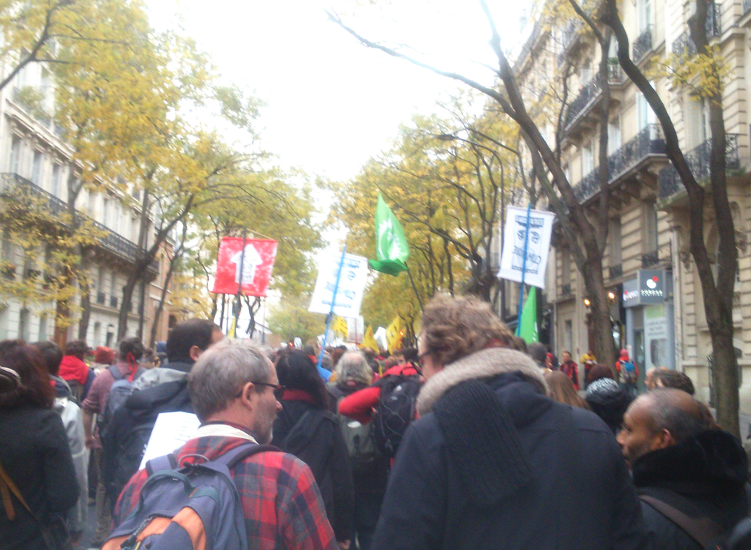Late in 2015, I sat in a huge conference centre full of men, listening to talks about the ways that technology would fix the world’s problems. We heard that quantum computing would let us work out how to sythesize fertiliser and transmit energy more efficiently, as well as breaking strong encryption (erm.. horay?). The Internet of Things (IoT) would reduce energy consumption and also make all industries (including agriculture) more efficient and productive. It would allow pesticides to be more quickly and precisely targeted. An IoT guru gave a list of predictions about the future – everyone with self driving cars, more vegetarianism. Finally, he proclaimed confidently “We will survive climate change”, although he gave no guidance about what changes we’d have to make in our lives to make this happen.
Afterwards, I was discussing the talk with an intelligent, nice man who’d also attended. To my horror, he’d taken from this talk that we as individuals didn’t need to do anything particular to fix climate change – the world’s technology is changing at such as fast rate, we would be amazed at what would appear in a few decades to clear things up.
This is my first problem with such a message. ‘Gods on machines’ of the title refers to the ancient greek theatrical ploy “whereby a seemingly unsolvable problem is suddenly and abruptly resolved by the contrived and unexpected intervention of some new event, character, ability or object – a lazy theatrical technique for rounding off a story that’s got a bit out of control” (Wikipedia, thank you). Yes technology has evolved rapidly, particularly around communication. But the tech that controls our energy generation is still largely crude and unsustainable. If we’re talking about new tech that involves engineering – ie changing physical systems in the world, systems that works without requiring HUGE amounts of energy, and without unforseen consequences.. well I’m not sure some huge change is coming soon. The dreamlike complacency that comes from waiting is deadly to our chances of keeping a healthy ecosystem on earth. What’s more, ‘we will survive’ is a biased – in fact nationalist, or even racist – description, with the kind of bias that the speaker doesn’t realise is present. The words were spoken by an American in London. At the moment ‘we’ are mostly surviving, though are homes are getting a bit damp or trashed by storms. People in other parts of the world are already dying from extreme weather caused by man made climate change.
We can’t wait for the god on the machine – it might never come, and if it really does, it won’t be in time, or it might have its own ideas, like gods tend to.
There’s a story that goes something like this, we’ve all heard it – an intrepid crew are stranded in a station, far from home. Oxygen or supplies are running out in the station, but there isn’t enough fuel to get back to base. The scientist has locked themselves in the lab, talking of some wonderful machine that can get them there… the scientist has been gone a while now. Some members of the team want to wait, others want to go. Eventually, they ALWAYS chose action over inaction – they set out, find ways of stretching the fuel… it’s still not enough, but at the last moment, the scientist appears on a prototype machine. It’s going thunk-a thunk-a and vibrating like crazy, but they manage to get most of the crew home before it blows up and they have to spend another 50 years working on it.
What are we waiting for? We need to invest massively in renewable energy and energy conservation now, we need to work together to reduce our consumption. What we can achieve might not be enough to prevent some further temperature rises, but it’s better than just waiting for something that might not happen. And maybe it can be enough…
My second issue with the message of events like this is that when you are selling a tech product, the world’s problems and their solutions are seen via the lenses of the large companies that you are selling to. And that old chestnut applies, ‘when all you’ve got is a hammer, everything looks like a nail’.
What if the problems are partly political? For example there was much talk about the looming food crisis – a growing population and not enough food – and the technological solutions to this problem. What we didn’t consider was the wider context. For example, the financial systems that make farmers in countries with hunger problems give up land for luxury crops to sell overseas, and the large amount of land dedicated to animal feed. What if small scale, low tech efforts (like regenerative agriculture) might actually be a better solution to hunger? This might not be part of the remit of a tech conference, but we tech people shouldn’t make the mistake of thinking we and our clients are the wizards with the solutions to all the world’s problems.





